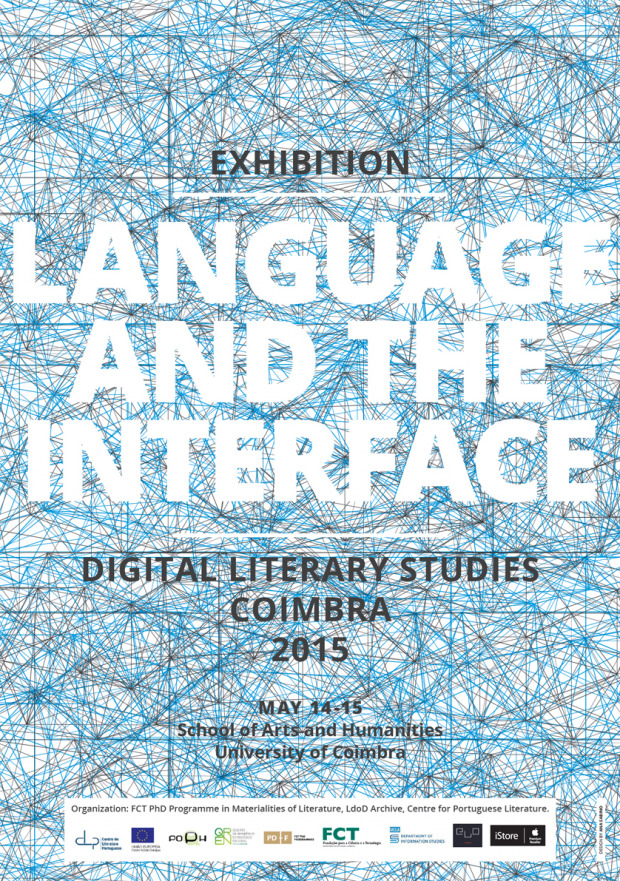Language and the Interface
“Language and the Interface” features a selection of 27 works, and results from research work carried out for the FCT PhD Programme in Materialities of Literature. The exhibition is curated by Daniela Côrtes Maduro, Ana Marques da Silva and Diogo Marques. It has been designed as an exploratory sample of writing strategies from different moments (1990-2015), in various languages (English, Portuguese, French), using diverse technologies (stand-alone and networked computer, tablets and mobile devices, augmented reality applications). The show is part of the international conference “Digital Literary Studies” hosted by the School of Arts and Humanities at the University of Coimbra, May 14-15, 2015. The works will be on display at the Faculdade de Letras (Room 6, 4th floor). For further information see: Exhibition “Language and the Interface”. (Source: Digital Literary Studies Conference 2015)
Curatorial Statement:
When considered as a simulating machine, the computer blurs the distinction among media or forms of representation. Sounds, images, films, animations and verbal language can now share the same inscriptional surface. Literary experience is impacted by this shift in media ecology. The concept of language itself can refer to spoken and written language, but also to other semiotic systems. Within the computer environment, the linguistic, visual, aural and kinetic forms are themselves made up of layered executable languages of computer codes. The computer can be described as a semiotic machine and processor of languages. It is through the conventions and structures of the graphical user interface that our interaction with digital objects is mediated. What is displayed on the screen is the result of multiple-order representations (or translations) that allow the inscription, processing, and presentation of data.
William S. Burroughs once wrote that “Language is a virus from outer space”. In electronic literature, the computer brings the concept of estrangement to a whole new level by rooting literary experience in an intersection between human and machine languages, and by using processing speed, data storage and programming to suggest further ways to validate or delay the production of meaning. The works presented here take creative, ludic, critical and experimental approaches to the interplay between language and interface. Choosing paths, touching words, generating new threads of meaning or jumping off a cliff are activities that the reader might be asked to perform.
The aim of the ‘Language and the Interface’ exhibit is twofold: on the one hand, to show different modes of processing and displaying language in networked programmable media; on the other hand, to call attention to the interface as both a constraining and enabling reading device. What happens when an understanding of literature as patterned verbal and written language is explored in conjunction with the metamedial affordances of the computer environment? What is the role of the interface in situating and constituting readers as subjects of digital literary works? How are the processing of language and the language of processing interfaced by the display?
This exhibit is part of the international conference “Digital Literary Studies” hosted by the School of Arts and Humanities at the University of Coimbra, May 14-15, 2015. Please feel free to join us and give it a try.
Daniela Côrtes Maduro
Ana Marques da Silva
Diogo Marques
Works presented:
- 1 of 2
- next ›


